Kayak Buying Guide (How To Choose 101)
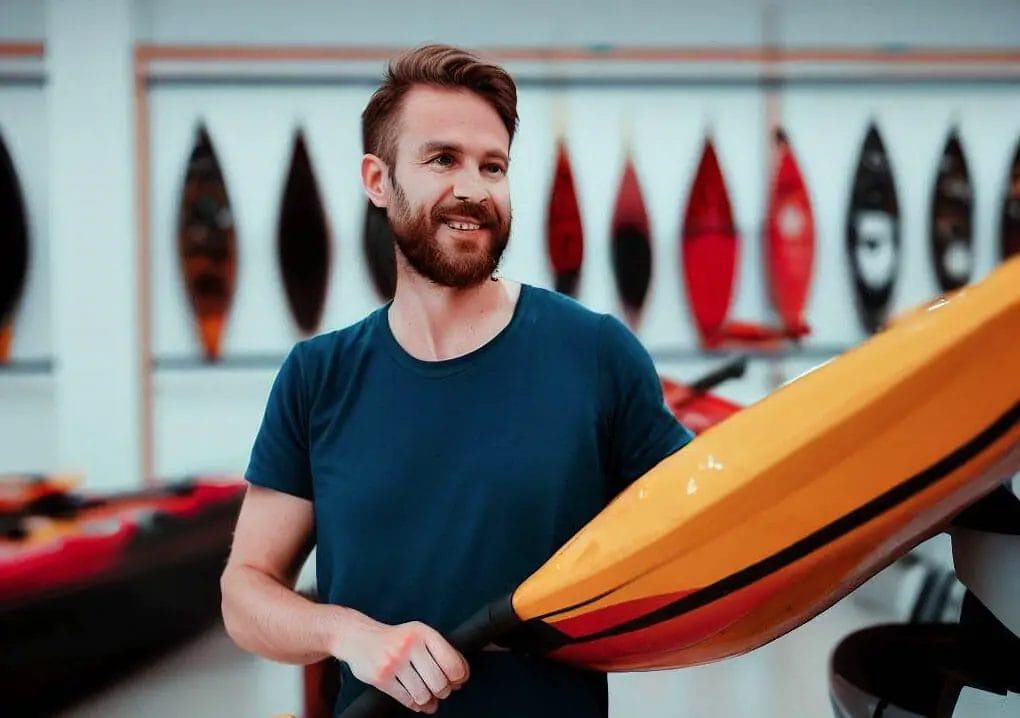
Some kayaks are more appropriate in the ocean, whereas others are more suitable for fishing. It is not unusual for a paddler to have a broad range of kayaks as they will all be used for different purposes.
This article will guide you through various kayak types, features, and pricing and help you decide which is best for you, their functionality, and how they align with your skill levels.
Consider Your Skill Level
The first thing you will want to do when getting started is to make sure you don’t choose a kayak outside of your skill level. If you’re starting, start with an easy kayak and work your way up.
Suitable Kayak Based on Skill Level
| Skill Level | Suggested Kayak Type | Reason |
|---|---|---|
| Beginner | Recreational Kayak or Inflatable Kayak | Easy to maneuver and relatively stable |
| Intermediate | Touring Kayak | Whitewater Kayak, Expedition Kayaks, Surf Kayaks |
| Advanced | Whitewater Kayak, Expedition Kayaks, Surf Kayak | Requires significant skill to navigate rapids and fast-moving waters |
Kayak Features to Consider
Beginner Level
As a novice paddler, your main focus should be stability and ease of use. Therefore, recreational kayaks, often called ‘sit-on-tops,’ are typically the best option for beginners.
Recreational Kayaks: These boats are generally wider (around 28-34 inches), which provides a stable platform that is less likely to tip over. They also have a larger cockpit or an open design allowing easy entry and exit. Some examples of beginner-friendly kayaks are the Perception Pescador Pro 10.0 and the Ocean Kayak Malibu.

Intermediate Level
Intermediate kayakers, who have the basic skills under their belt and are starting to venture into different types of water or longer distances, should start to consider a ‘day touring’ or ‘sea kayak.’
Day Touring Kayaks: Slightly narrower and longer (between 12-16 feet) than their recreational counterparts, these kayaks are designed to move more efficiently through the water, allowing you to cover greater distances with less effort. They often have smaller cockpits and a more streamlined design. A few intermediate paddler options include the Dagger Axis 12 and the Wilderness Systems Tsunami 140.
Sea Kayaks are the longest (often 16-19 feet) and narrowest, making them the fastest and most efficient over long distances. They have two sealed bulkheads for buoyancy and storage. They also often include a rudder or skeg for better tracking in open water. The Necky Chatham 17 or the Wilderness Systems Tempest 170 Pro are examples of sea kayaks well suited for intermediate paddlers ready for the challenge of the sea.
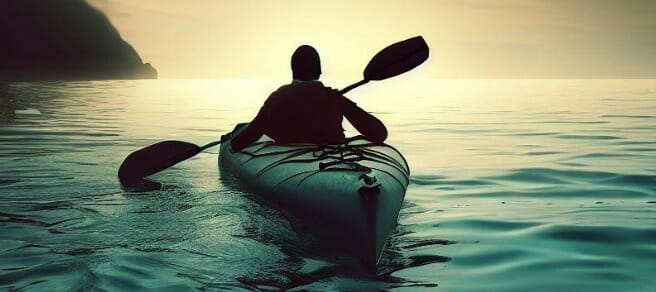
Advanced Level
Advanced paddlers often seek performance and specific features for particular paddling environments like fast-moving rivers or open oceans.
Whitewater Kayaks: These are much shorter, typically 8-9 feet, and have a lot of rockers (curve from bow to stern), which makes them highly maneuverable in rapids but not particularly fast or straight-running on flat water. The Dagger Mamba Creeker 8.6 and the Jackson Kayak Zen 3.0 are great whitewater kayaks for experienced paddlers.

Surf Kayaks: These are specifically designed for surfing ocean waves. They are generally short and have flat bottoms and sharp edges for carving turns. The Mega Bullitt X and the Riot Boogie 50 are popular surf kayak models.
Expedition Kayaks: These are designed for long-distance sea touring. They’re long, narrow, and have lots of storage space for multi-day trips. The Stellar SR Excel and the Current Designs Solstice GT are considered top-of-the-line for this category.
Remember, taking things at your own pace and upgrading to more advanced kayaks when you truly feel ready is essential. Additionally, always consider safety equipment and practice self-rescue techniques no matter your skill level. Happy paddling!
Where You Will Be Paddling
Let’s get started by going through all the areas where you might be paddling and how to choose the right kayak for them.
Best Kayak Types for Different Environments
| Environment | Kayak Type | Characteristics | Example Model |
|---|---|---|---|
| Flatwater Lakes and Ponds | Recreational Kayak, Sit-on-top Kayak | Stable, Easy to Maneuver, Good for fishing | Perception Pescador Pro |
| Slow Moving Rivers and Streams | Recreational Kayak, Day-Touring Kayak | Balance between Stability and Speed | Dagger Axis 12 |
| Fast Moving Rivers and Whitewater | Whitewater Kayak | Short, High Maneuverability, Resilient Construction | Dagger Mamba Creeker 8.6 |
| Coastal Waters and Open Sea | Sea Kayak, Touring Kayak | Long, Narrow, Efficient, Good Tracking | Necky Chatham 17 |
| Surf Zones | Surf Kayak | Short, Flat Bottom, Sharp Edges, May have Fins | Riot Boogie 50 |
| Expeditions and Multi-day Trips | Expedition Kayak | Long, Sleek, High Storage Capacity | Current Designs Solstice GT |
Flatwater Lakes and Ponds
Recreational kayaks are often excellent for calm water-like flatwater lakes and ponds. They are stable and easy to maneuver, perfect for peaceful paddling or fishing trips. The wider hulls offer stability, allowing you to take in the scenery or focus on casting a fishing line. Sit-on-top kayaks, like the Perception Pescador Pro, offer an excellent platform for these waters.

Slow Moving Rivers and Streams
Slow-moving rivers and streams may have more flow than flatwater lakes, but they’re not necessarily challenging. A slightly sleeker and longer recreational kayak or a day-touring kayak can be a good choice for these environments. These kayaks balance stability and speed, making them easy to control even in a mild current. The Dagger Axis 12, for example, is a versatile option for these environments.

Fast Moving Rivers and Whitewater
Fast-moving rivers and whitewater rapids require a specialized kayak called a whitewater kayak. Whitewater kayaks are shorter and have more rocker (the curve from bow to stern) to increase maneuverability. The rounded edges and tough construction also help them withstand bumps against rocks and other obstacles. The Dagger Mamba Creeker 8.6 is a renowned whitewater kayak known for its stability and robustness.

Coastal Waters and Open Sea
Coastal and open seas can be challenging due to tides, currents, waves, and wind. For these conditions, sea or touring kayaks are the way to go. These are long, narrow kayaks designed for speed and efficiency over long distances.
They also have sealed bulkheads for buoyancy and storage and a rudder or skeg for improved tracking in open water. The Necky Chatham 17 is an excellent sea kayak for those looking to tackle the open waters.

Surf Zones
If you aim to carve turns on the face of ocean waves, then a surf kayak is your best bet. These are typically short with flat bottoms and sharp edges and often have fins, much like a surfboard. These features allow the kayak to catch and ride waves with control. The Riot Boogie 50 is a popular choice among surf kayakers.
Expeditions and Multi-day Trips
An expedition kayak would be most suitable for expeditions and multi-day trips involving long distances, varied conditions, and need a lot of gear. They are long, sleek, and offer plenty of storage capacity. A model like the Current Designs Solstice GT is built for such adventures.
Kayak Materials
Let’s get started by diving into the different materials for each kayak. Below is a chart of each; further below, I will go into detail about each one.

Characteristics of Kayak Materials
| Material | Durability | Weight | Performance | Cost | Best For |
|---|---|---|---|---|---|
| Polyethylene (Plastic) | High | Heavy | Good | Low | Beginners, occasional paddlers |
| Fiberglass | Moderate | Light | Very Good | Medium | Open water, flatwater paddling |
| Carbon Fiber | Moderate | Very Light | Excellent | High | Experienced paddlers, performance-focused kayaking |
| Inflatable (PVC, Hypalon, Nitrylon) | Good | Very Light | Fair | Varies | Kayakers with storage/transportation limitations, easy paddling |
Kayak Material Examples
| Material | Example Model |
|---|---|
| Polyethylene (Plastic) | Wilderness Systems Tarpon 100 |
| Fiberglass | Eddyline Skylark |
| Carbon Fiber | Stellar S18S |
| Inflatable (PVC, Hypalon, Nitrylon) | Advanced Elements AdvancedFrame |
Plastic (Polyethylene)
Plastic polyethylene is the most common material used in kayak construction.
This is primarily because it’s highly durable and resistant to impacts – perfect for withstanding the occasional knock against rocks or a drop on a hard surface. However, this material is heavier than others, like fiberglass or carbon fiber, making transportation and handling more challenging.
Polyethylene kayaks are also generally more affordable, making them a good option for beginners or occasional paddlers. An example is the Wilderness Systems Tarpon 100.
Fiberglass
Fiberglass kayaks are a step up from polyethylene in terms of performance and price.
These kayaks are lighter, making them faster, more efficient on the water, and easier to transport. However, fiberglass isn’t as impact-resistant as polyethylene, which could crack or puncture if it hits a hard object. Therefore, fiberglass kayaks are better suited for open water or flatwater paddling with fewer obstacles.
Carbon Fiber
Carbon fiber is the premium material in the world of kayaks. It’s even lighter and stiffer than fiberglass, providing the best performance in speed and efficiency. However, like fiberglass, it’s less resistant to impacts than polyethylene.
Due to the high cost of carbon fiber, these kayaks tend to be the most expensive. Experienced kayakers who demand the highest performance often use carbon fiber kayaks, like the Stellar S18S.
Inflatable Materials (PVC, Hypalon, Nitrylon)
Inflatable kayaks offer a completely different set of advantages. They are made from materials like PVC, Hypalon, or Nitrylon, and they can be deflated for easy storage and transportation – a huge plus if you’re short on space.
Inflatable kayaks are surprisingly durable and can withstand many obstacles. However, they are generally slower on the water and less efficient than hard-shell kayaks. Also, there’s always a risk of puncture, so it’s important to avoid sharp objects. The Advanced Elements AdvancedFrame kayak is a popular inflatable model.
Ultimately, the choice of material will depend on your personal preferences, budget, and the type of kayaking you intend to do. Each material offers unique characteristics that can enhance or inhibit your paddling experience. Therefore, understanding these materials and their implications is crucial in choosing the best kayak for your needs.
Weight and Size Considerations
| Attribute | Impact | Ideal For | Example Model |
|---|---|---|---|
| Short Length<10 feet) | Easier to maneuver, slower, less stable, easy to transport and store | Small rivers or streams, easy storage and transport | Dagger Zydeco 9.0 |
| Long Length (>12 feet) | More efficient (faster), better tracking, less maneuverable, harder to transport and store | Long-distance touring, sea kayaking | Wilderness Systems Tsunami 145 |
| Wide Beam | More stable, slower, requires more effort to paddle | Beginners, anglers, standing activities | Perception Pescador Pro 12.0 |
| Narrow Beam | Less stable, faster, more responsive, easier to roll | Experienced kayakers, speed prioritization, whitewater kayaking | Dagger Stratos 14.5 S |
Length
The length of a kayak impacts its speed, maneuverability, and stability. Shorter kayaks (less than 10 feet) are typically easier to turn and maneuver, making them ideal for small rivers or streams requiring quick movements. They’re also easier to transport and store. However, they tend to be slower and less stable than longer kayaks.
Longer kayaks (12 feet or more) glide through the water more efficiently, making them faster and more suitable for long-distance touring or sea kayaking. They also track better, meaning they maintain a straight line better than shorter models. The downside is they’re harder to turn quickly and can be a challenge to transport and store due to their size.
Width
The width of a kayak, also known as the beam, affects its stability and speed. Wider kayaks offer more stability, which is particularly important for beginners, anglers, or anyone planning on standing up in their kayak. However, they’re slower and require more effort to paddle.

Narrower kayaks are less stable but faster, making them a good choice for experienced kayakers or those who prioritize speed. They also tend to be more responsive and easier to roll, which can be advantageous in situations like whitewater kayaking.
Weight
The weight of a kayak can significantly influence its portability. Heavier kayaks can be tough to carry from your vehicle to the water, especially if you do it alone. A lightweight kayak is much easier to handle but might also be more susceptible to wind and currents due to its lightness.
Furthermore, the kayak’s weight limit should also be considered. This is the maximum weight (including the paddler and any gear) the kayak can carry while staying afloat. Ensure the kayak’s weight limit exceeds your total weight (including gear).
In summary, there is no one-size-fits-all regarding kayak size and weight. It balances what you value more – stability, speed, maneuverability, or portability.
For instance, the Perception Pescador Pro 12.0 is a great option for anglers due to its wide beam and ample storage. At the same time, the Wilderness Systems Tsunami 145 is excellent for long-distance touring thanks to its length and streamlined design. Consider your needs, skill level, and where you plan to kayak before deciding.
Pricing and Brands
Pricing
The cost of a kayak can vary greatly depending on the type, material, size, features, and brand. Setting a budget before you start shopping and understanding what you can expect within different price ranges is essential.
| Price Range | Ideal For | Example Model |
|---|---|---|
| Less than $500 | Budget-conscious beginners occasionally use | Intex Explorer K2 Inflatable Kayak |
| $500 – $1000 | Recreational paddlers, fishing, day touring | Perception Pescador Pro 12.0 |
| $1000 – $2000 | Serious recreational paddlers, touring, fishing | Wilderness Systems Tsunami 145 |
| $2000 – $3000 | Long-distance touring, expeditions | Current Designs Solstice GT |
| More than $3000 | Professional touring, expeditions, high-performance use | Stellar S18S Carbon Fiber Kayak |
At the lower end of the price spectrum, around $200 – $500, you’ll typically find recreational kayaks, most of which are plastic and intended for calm water conditions. These kayaks are generally heavier, less durable but can be a great starting point for beginners.
In the mid-range, around $500 – $1000, you can find more specialized kayaks, such as fishing or touring models. These kayaks usually have added features like adjustable footrests, comfortable seats, storage compartments, and sometimes even rudders. They are more durable and perform better than the lower-end models.
High-end kayaks cost $1000 and upwards and are usually made from lightweight, durable materials like carbon fiber or high-quality plastic. They offer the best performance and have advanced features like adjustable padded seats, skegs or rudders, and more storage compartments. These are typically designed for specific activities like sea kayaking, whitewater kayaking, or professional kayak fishing.
Brands

Many kayak brands are in the market, each with unique offerings and specialties. Some renowned brands include:
- Sea Eagle: Known for its high-quality inflatable kayaks, perfect for those who need portability and easy storage.
- Sun Dolphin: Offers a wide range of affordable recreational and fishing kayaks, making it popular among beginners and occasional paddlers.
- Old Town: This brand has a long history and offers a broad spectrum of kayaks, including recreational, touring, and fishing models. Their kayaks are known for their quality and durability.
- Hobie: Hobie is famous for its pedal-powered kayaks, favored by anglers and anyone who wants to keep their hands free while paddling.
- Wilderness Systems: A brand known for its well-designed and feature-packed kayaks catering to various activities.
Characteristics For A Good Kayak
| Feature | Why it’s Important |
|---|---|
| Stability | The ability of the kayak to change direction swiftly crucial for whitewater kayaking |
| Speed | High-speed kayaks are more challenging to control but offer quick movement |
| Maneuverability | Important for those planning long trips or fishing |
| Storage Space | Important for those planning for long trips or fishing |
| Weight Capacity | Determines how much load (person + gear) the kayak can safely carry |
Stability
This feature refers to how well the kayak can stay upright in the water. It’s generally classified into two types – primary and secondary. Primary stability refers to the kayak’s steadiness while sitting flat on the water.
This is essential for beginners, making them feel safer and more secure.

Secondary stability is how the kayak performs when tilted on its side – this becomes important when navigating through waves or fast currents.
Speed
This refers to how quickly a kayak can move in the water. The length and shape of the hull generally determine speed.
Longer and narrower kayaks tend to be faster but may be less stable and harder to maneuver, especially for beginners. While speed can be thrilling for more experienced kayakers, it might be less important for those mainly interested in leisurely paddling or fishing.
Maneuverability
This describes how easily the kayak can change direction. Shorter kayaks with rocker (a curved shape of the hull from bow to stern) are typically more maneuverable, which makes them perfect for navigating through rapid rivers or tight waterways.
However, they may be slower in straight lines. This feature is especially important for whitewater kayakers who often need quick directional changes to navigate rapids.
Storage Space
Depending on the type of kayaking you’re interested in, storage can be a significant factor. If you plan to take multi-day trips or bring fishing gear or photography equipment, you’ll need a kayak with ample storage space.

Many sea or touring kayaks come with built-in storage compartments for this purpose. On the other hand, storage might not be as critical if you’re only planning on short trips.
Weight Capacity
This is the total weight that the kayak can safely carry without negatively affecting its performance. This includes the paddler’s weight and any gear or equipment you plan on bringing.
If you exceed the weight capacity, the kayak will sit lower in the water, affecting its stability, speed, and maneuverability. Before purchasing a kayak, consider your weight and the weight of your usual gear to ensure it falls within its weight capacity.
Key Features and Accessories

Adjustable Footrests
Adjustable footrests or braces offer a spot to rest your feet while paddling. These features can provide more comfort during long rides and enhance your control over the kayak, especially when turning or maneuvering. They allow for customization to fit paddlers of different heights and leg lengths. Kayaks without this feature can be less comfortable and harder to control.
Comfortable Seats
Comfort should never be overlooked when purchasing a kayak. Look for kayaks with adjustable padded seats. They provide comfort for long trips and can significantly improve your kayaking experience. Some high-end models offer seats with customizable back support and extra cushioning.
Storage Compartments
Storage compartments are crucial for long trips and must-have for kayak camping or fishing. Most kayaks come with bungee rigging on the deck for storing items that can get wet. But for valuables or items you need to keep dry, look for kayaks with sealed hatches.
Skegs and Rudders
Skegs and rudders are retractable fins that help track the kayak, particularly in windy or strong currents. A skeg, which drops from the bottom of the kayak, can improve the tracking but doesn’t allow for steering. A rudder, mounted on the stern, can be controlled with foot pedals and allows for steering.
Fishing Rod Holders
If you’re into kayak fishing, rod holders are essential. Some fishing kayaks come with built-in rod holders, while others have tracks to mount accessories like rod holders. Some kayaks even offer hands-free fishing with pedal-powered propulsion, allowing you to navigate while keeping your hands on the rods.
Safety Equipment
It’s important to note that no matter how calm the water or weather is, safety should be your primary concern. Always wear a personal flotation device (PFD) or life vest while kayaking, regardless of your swimming ability. Other safety gear includes a helmet (especially for whitewater kayaking), a whistle to signal for help, a bilge pump to remove water from the kayak, and a paddle float for self-rescue in deep water.
Consider additional accessories like spray skirts (for sea or whitewater kayaking), a compass or GPS for navigation, dry bags for storing valuables, and a first-aid kit for emergencies.
Choosing a kayak with the right features and accessories for your specific needs can significantly enhance your experience on the water. While a feature-rich kayak might cost more, its comfort, convenience, and safety could be worth the extra investment. Remember that the most expensive kayak isn’t necessarily best for you. It all depends on how well it meets your needs and preferences.
Breaking Down the Different Types
Inflatable Kayaks
Inflatable Kayaks are easy to transport and can often be carried in bags or by hand. They have a heavy-duty exterior and often have a kit inside so you can make easy repairs on the go. They are inflated by hand, foot, or, if you have one, an electric pump.
As for the material, an inflatable kayak is usually made from double ripstop PVC or nylon and is usually pumped up lightly with a PSI below 3. Recently, however, kayak companies have been making more rigid inflatable kayaks and combining the design of a sit-on-top kayak hull with several outer inflatable sections, which reduce weight and can make for a strong, seaworthy kayak.
Inflatable kayaks are lightweight and easily transported due to their compact design. Furthermore, they are suitable for beginners and are easy to master. Because of the low pressure, these kayaks are perfect for rivers and calm bays, but as mentioned before, with the newer builds, they may also be suitable for sea conditions.

Best For
Short Trips, Lakes, Some Like Sea Eagle Models, good for whitewater
Fishing Kayaks
If you are a huge fishing fan, you are going to want to be able to go out into the deep ocean and fish in deep waters, and this is where fishing kayaks come in. These kayaks will be able to get you close to shores and to reefs where the fish will be more plentiful.
These kayaks are similar to sit-on-top kayaks but have increased stability as the Fisher needs to be stable when fishing. The stability is enhanced through a wider hull, and they often have a comfortable under-fitting, making for safe and efficient fishing no matter your conditions.
You should have no issues getting to your fishing spot either, as a fishing kayak will allow you to easily paddle out because of the sleek and efficient way it’s designed, and through molded support, your kayak shouldn’t tip with large swells or big catches.
Fishing kayaks are also customizable and can be modified to suit the angler’s needs. Some anglers will incorporate rod holders, GPS, and even electronic fish finders, which can track the particular fish they are chasing. Creativity is the key to fishing kayaks; you can make the perfect kayak with various equipment.

Best Types
Sit On Top – Best For Ocean Fishing, Great for all other
Sit In – For Lakes, harder to fish on shakey water, low maneuverability
Sit-on-Top Kayaks
These kayaks are very similar to the other kayaks mentioned in this article. Still, the main difference is that instead of sitting inside the kayak, you sit outside on a molded-in depression that resides on top.
These kayaks are typically used for fishing, surfing, and touring. They can be very versatile because it is easier to enter and exit the water in a sit-on-top kayak, and it is also simpler to access storage on the move. Because the seat is above water level, the center of gravity is higher for the paddler, and this is compensated with a wider design which, in turn, makes them slower.
Sit-on-top kayaks are perfect for beginners because of their multi-function ability and because you do not need to practice wet exits or rolls because you will not be trapped in the kayak in an emergency.
Also, if you have a large body and long legs, you may find a sit-on-top kayak more comfortable because you will have more room to move. Also, the kayak is effectively unsinkable because the hull is closed, making them ideal for sea and recreational kayaking.
If you feel like traveling out with a partner, these kayaks come in single and double designs, making them perfect for partnered journeys.
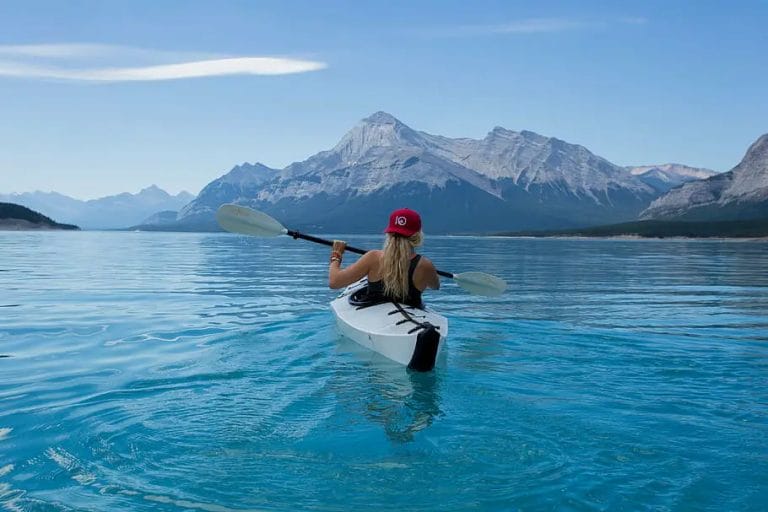
Best For
Fishing, Open Ocean, Lakes, Bays, Rivers, Ponds, Diving, Family Trips
– Best Stability
Touring Kayaks
These designs are for the more casual user; you may not expect to see one in a professional’s collection.
These kayaks allow for a more relaxed experienced and are often used in calm rivers and still lakes, and can even be used on longer trips.
The main difference with a recreational kayak is that they are significantly shorter than other styles and often incorporate a larger cockpit, making entering and exiting a little easier. They are designed with stability in mind as they often include strong sterns and positive tracking, making them great for beginners, as previously mentioned. However, these kayaks are also great for fishing and exploration.
They are comfy because of the included backrest and regularly have a foot rudder for better control. If you plan on longer trips, you can find ones that include watertight storage compartments preventing them from being soaked in the event of a capsize.

Best For Cottage Kayaker
Sea Kayaks
Sea kayaks are ideal for long-distance and adventurous journeys into the open sea and are intended for use by various users with various styles. Sea kayaks come in different sizes, requiring a particular skill level to master. They are intentionally designed for straight tracking and have an efficient hull form that makes them ideal for long-distance travel and open crossings.
Sea kayaks are not as maneuverable as other kayaks. Still, in return, they have a longer waterline and reduced rockers (the bottom of a kayak), making them perfect for long distances.
Despite the lack of maneuverability, there is a small compensation from the edging characteristics, which the more experienced users will like. Some sea kayaks will also be designed to scatter the waves by including an upturned bow, and rudders or skegs can enhance line tracking. Modern sea kayaks have also been known to include two or more bulkheads to store essential travel gear in the below-deck storage without risking your gear being drenched in the water. This storage is also great for emergencies.
The sea kayak design is geared towards long-distance traveling and is often associated with more experienced users. The design can be made from various materials and has additional features that fit any condition and terrain. When choosing an appropriate sea kayak, consider the length, width, and cargo capacity before you purchase.
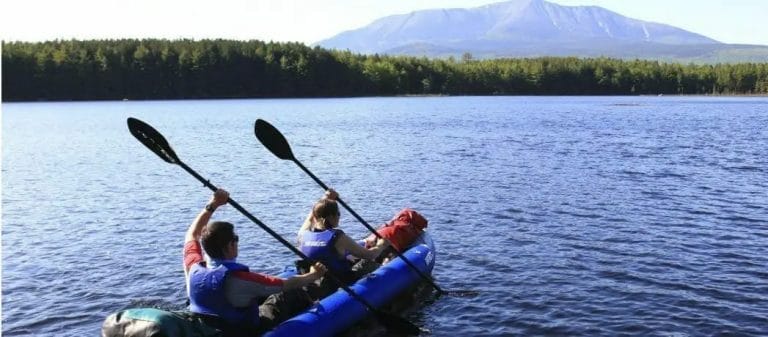
Best For
Open Ocean and Bays With a Spray SkirtRacing, due to high speeds. Good for riversDecent for fishing, camping, lakes
Kayaks for Racing
These types of kayaks are going to be lightweight and will be narrower than your standard kayak. They are also better equipped for the more experienced users in the kayaking community as they require particular expertise to paddle. However, with the proper training, they can be paddled incredibly fast.
As implied by the name, these kayaks are designed for competitive kayaking and racing but can also be used for recreational purposes depending on how the user wants to use them.
A racing kayak is usually longer and narrower and has a smaller surface area, allowing for less drag when paddling at high speeds. Due to the design incorporating a good length, racing kayaks are ideal for straight-line tracking and can often include rudders to help them turn, which is usually controlled using the user’s feet.
The cockpit is typically enclosed, and they sometimes have similar features to that of a sea kayak, but with different characteristics allowing for great speeds to be obtained in the water. Because of the narrow design, higher skill will be needed with balance and paddling if you intend on using a racing kayak in open water.
As suggested in the name, racing kayaks are specialized for racing events. They are great for an experienced user as they can achieve higher speeds in the water thanks to their narrow, slick design.
However, more skill is needed to use these kayaks because of the issues regarding balancing and paddling.
Best Types
Sit On Top – Best For Ocean Fishing, Great for all other
Sit In – For Lakes, harder to fish on shakey water, low maneuverability
Whitewater Rafting Kayaks
These kayaks are designed to be used on a moving body of water, such as a wave or in a rushing river, and their use can vary from a chilled cruise down the river to a more high-speed trip.
Rivers are classified in difficulty, and some rivers will be more challenging than others. However, if you intend on tackling these types of rivers, you will need a specific kayak known as a whitewater kayak.
These are made from high-impact plastic and are usually shorter than standard kayaks. This reduction in size makes the kayaks more maneuverable but worse if you plan on executing long-distance travel. Despite this speed reduction, it is made up for due to the moving water of the rivers they are used in.
The plastic used is also more flexible and durable, and the kayaks can range in size depending on the style of whitewater rafting you intend to perform. There are three variations of whitewater rafting, and they will be discussed below:
• Creeking
This style of whitewater rafting is categorized by the technical and challenging rapids associated with high-difficulty rivers.
Usually, the gradient in creaking is steeper, and slides and waterfalls will be present on these trips. Furthermore, the rivers tend to be tighter, and more experienced users will be more equipped to deal with the technicalities.
The type of kayaks used in these conditions will be higher in volume and slightly more rounded to add extra safety if you get pinned and offer extra buoyancy that aids resurfacing.
• Playboating
This is more of a gymnastic style of kayaking, and it usually involves staying in one space and not moving from one point to another.
You can usually notice playboaters as they do flips and tricks in the water and perform some aerial moves that have become popular in recent years.
The kayaks that will be useful in this situation will be low volume and should allow the user to submerge at both ends of the kayak easily.
• Running
This is a more moderate version of whitewater kayaking and is considered more peaceful and scenic, but you may need to tackle the occasional rapid currents now and again. This also can include day trips and longer journeys and requires a kayak with a larger storage compartment and a more comfortable seat.
• Surf
this involves similar kayaks to whitewater, but they have flat sides (planing hull) and sharper rails, which can carve into the wave and provide better movement.
This planning hull makes it easier for the users to catch the waves quicker and to achieve greater speeds. Combining all these lets you get something similar to a surfboard and a lightweight model typically designed from fiberglass.
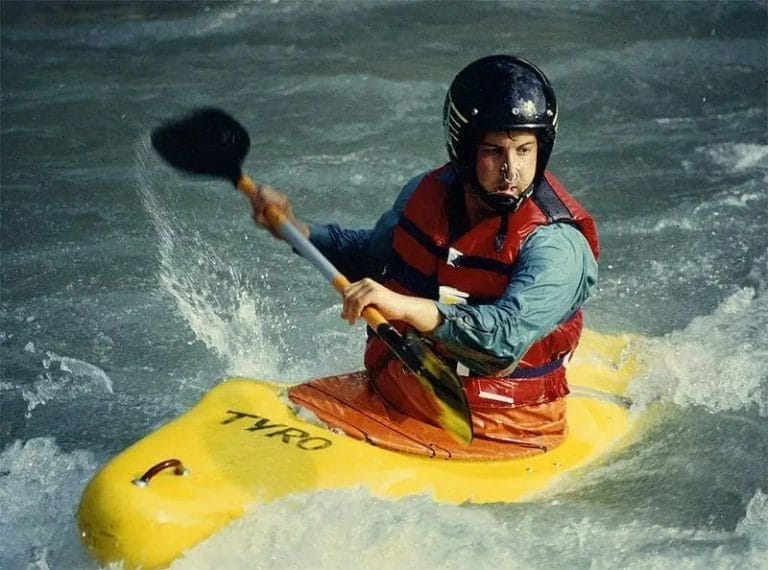
Best Types
Specialty Hard Shell – The more common choice, these are made special for rapid and have a grooved bottom to avoid getting stuck on rocks; materials are usually much more durable as well
Inflatable – Some newer models of inflatable kayaks, such as the later Sea Eagle models, can take on high-class rapids without issues.
Sailing Kayaks
There are many reasons to decide to rig your kayak using a sail. Sails may be used to improve speed and your range on day trips or expeditions. They can put some security on challenging journeys or take the sting away from long rides.
As sea kayaking started in the 80s and 90s, boat layouts moved toward high-performance contours that weren’t usable with the sail designs of the day. Sails did not keep pace with innovations in technique and kayak design, and sailing became a specialty section of the sport rather than a principal focus.
Sea kayak sailing faded in emphasis, and visibility was put on powering the kayaks using the paddle. All this has changed together with the introduction of new sail layouts. Newage sails are easy, powerful sail rigs that can be perfectly matched to the kayak layouts of today.
They can be accommodated and fit almost any touring kayak and plank, with no complicated outriggers or rudders. Kayak sailing is for anyone trying to take their kayaking that extra step by adding a new dimension to the sport.
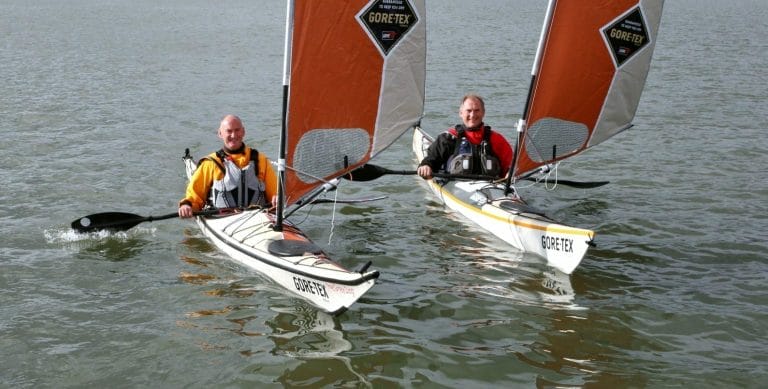
Best For– Kayakers looking to try something new Best used on the ocean where the wind is stronger, can be used on lakes.
